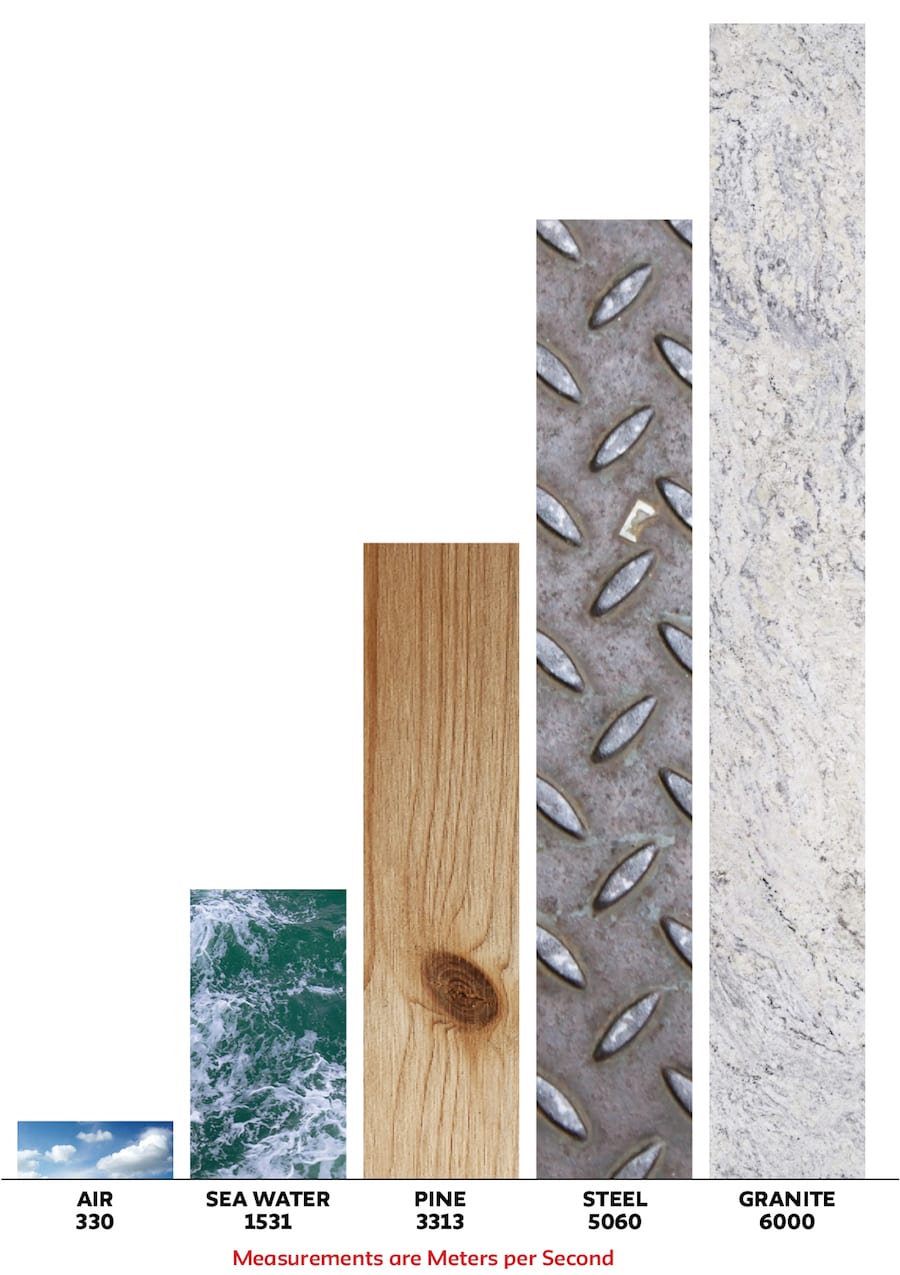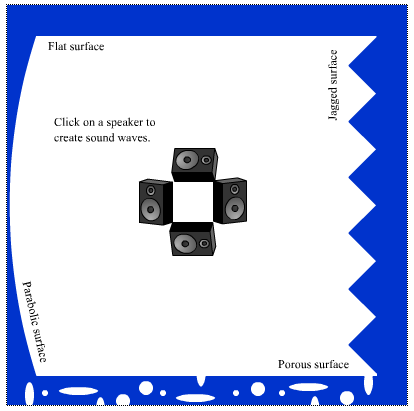Absorption & Reflection
Sound is made of waves
that travel out (or propagate) from their source until they dissipate, bounce off a surface or are absorbed into a surface or substance. Sound can be impacted by the qualities of the substance it travels through, the denser the substance the faster the sound travels. Sound travels faster in water than it does in air for example (water is more dense) and faster still in a solid object in which the molecules or even more tightly packed. Temperature can even impact the way that sound travels, in warmer air the molecules are farther apart, so sound moves more slowly through it. In colder air sound travels more quickly because the waves are more uniform and uninterrupted in the denser atmosphere.
Here is a simple graphic that will give you an idea of how varied the speeds can be between different materials

What do Sound Waves look like?
Here’s a video from NPR.
You can actually see sound waves as they travel through the air thanks to a clever photographic trick.
Materials and Sound - Absorption and Reflection
The materials of the world around us also impact sound waves and consequently, our experience of hearing. Two important concepts in acoustics that impact our perception of space are Absorption and Reflection. As sound waves travel through a closed space or space with some kind of obstruction, they will eventually hit a surface. The qualities of that surface will determine what happens to that wave next.
Reflection
Reflection is responsible for many interesting phenomena. Echoes are the sound of your own voice reflecting back to your ears. The sound you hear ringing in an auditorium after the band has stopped playing is caused by reflection off the walls and other objects. A sound wave will continue to bounce around a room, or reverberate, until it has lost all its energy. A wave has some of its energy absorbed by the objects it hits. The rest is lost as heat energy.
Absorption
Everything, even air, absorbs sound. One example of air absorbing sound waves happens during a thunderstorm. When you are very close to a storm, you hear thunder as a sharp crack. When the storm is farther away, you hear a low rumble instead. This is because air absorbs high frequencies more easily than low. By the time the thunder has reached you, all the high pitches are lost and only the low ones can be heard. The best absorptive material is full of holes that sound waves can bounce around in and lose energy. The energy lost as heat is too small to be felt, though, it can be detected by scientific instruments.
An example of Absorption and Reflection
Here’s An interactive illustration of different kinds of surfaces responding to sound waves from the educational pages of NDT (nondestructive testing professionals and educators from around the world.) The surface types are
• flat • concave • porous • jagged
Click the image below to go to the online animation:
How does sound behave in a city? How do our ears help us understand direction?
Here are two clips from a 2-part BBC series called Sound Waves:The Symphony of Physics
Sound in the city
Sound, direction and the construction of our ears
Echoes - the case of Echo bridge
‘Built in the 1870s, this forty-metre wide arch spans the Charles River. There are steps down to a specially built platform so visitors can test out the sound effect. In September 1948 Arthur Taber Jones wrote to the Journal of the Acoustical Society of America, detailing a small study. ‘A handlcapp [sic] is returned in a series of about a dozen echoes of decreasing loudness, and at a rate of about four echoes per second.
The question Jones posed in his article was whether the sound was skimming around the inside of the curved arch, like a whispering gallery or propagating horizontally just above the water. The video below, created with a modern acoustic prediction model shows how sound moves under the bridge. No wonder Jones struggled to work out what was going on, because it seems that the sound both skims around the arch and bounces back and forth horizontally just above the water.’
– from Sound Wonders – A Guide to Sonic Tourism
Here’s a video where you can hear what the bridge sounds like
Here is an artist that uses simple tools to reveal the reverberation of the built environment
